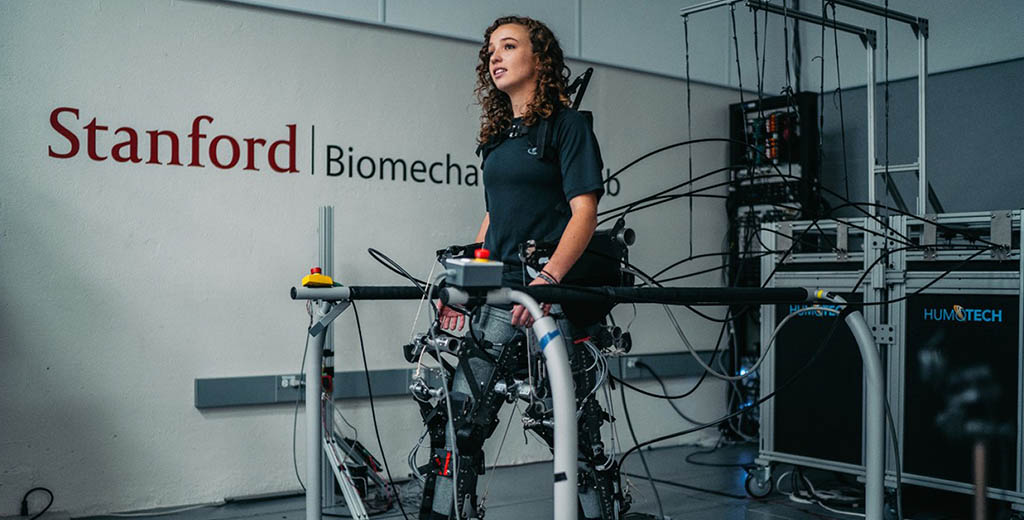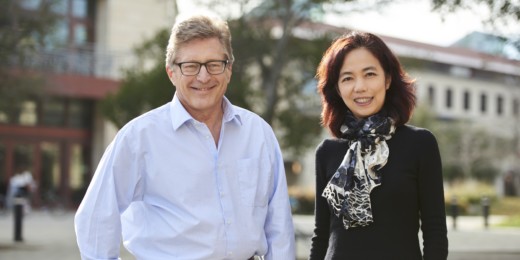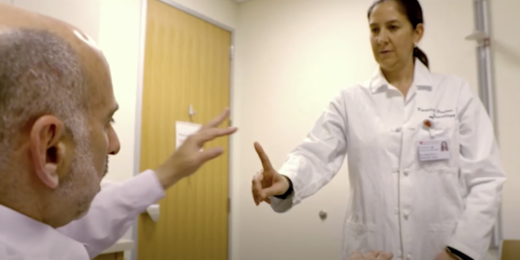When most of us stumble and fall, it's likely we'll end up with bruises, a chipped tooth or maybe scraped-up knees and elbows. But as we age, various factors can conspire to increase the chances we'll fall, and how badly we'll be injured when we do.
In the United States, the Centers for Disease Control and Prevention reports, falls are the leading cause of injury-related deaths among adults 65 and older; and the rate of falls for people in that age group increased 30% between 2009 and 2018, costing the country's health care system about $50 million a year.
While there are things older adults can do to improve balance and strength, Stanford researcher Karen Liu, PhD, is leading a project to create a wearable robotic device to help predict and prevent such falls.
Addressing problems through AI
Liu, a professor of computer science, is one of multiple researchers who recently received funding through the new Stanford Institute for Human-Centered Artificial Intelligence Hoffman-Yee Research Grant Program.
The program, which is supported by philanthropists Reid Hoffman and Michelle Yee, is a multiyear, multidisciplinary initiative to use artificial intelligence to address real-world problems. Six projects received funding under the inaugural program.
"These projects will initiate and sustain exciting new collaborations across the university," said John Etchemendy, PhD, the Denning Co-Director of HAI and the Patrick Suppes Family Professor in the School of Humanities and Sciences. The grant recipients represent the Stanford schools of humanities and sciences, medicine, business, education, engineering and law.
Predicting falls, stabilizing balance
With their project, Liu and her team -- which includes VJ Periyakoil, MD, a geriatrics specialist and associate professor of medicine and of neurology -- look to develop wearable robotic devices to aid in human locomotion.
They plan to develop a semi-rigid exoskeletal device that would be placed around a user's hip area to provide extra control and power to muscles in that region. It could later extend to more of the leg, Liu said.
With a built-in computer, the device would use AI to predict falls by monitoring the user's movement. If the device detects a possibility of falling, it would help stabilize the user's balance and timing to prevent the fall. "It might help the user take the next step a little faster or make it longer or shorter," Liu said.
Robots to diagnose developmental disorders
Another of the six projects that addresses health outcomes aims to create playful, socially-interactive robots that can more effectively diagnose people with developmental disorders, including autism.
Dan Yamins, PhD, an assistant professor of psychology and computer science, is leading the team, which includes Dennis Wall, PhD, an autism expert and a Stanford Medicine associate professor of pediatrics, psychiatry and biomedical data sciences.
"By studying the human brain, we can learn about the underlying algorithms being run by the brain, and then use those algorithms to improve the performance and human likeness of machines," said Yamins. "The most amazing learning machines on the planet are human children."
Photo by Christophe Wu, representing previous research by Karen Liu, PhD





